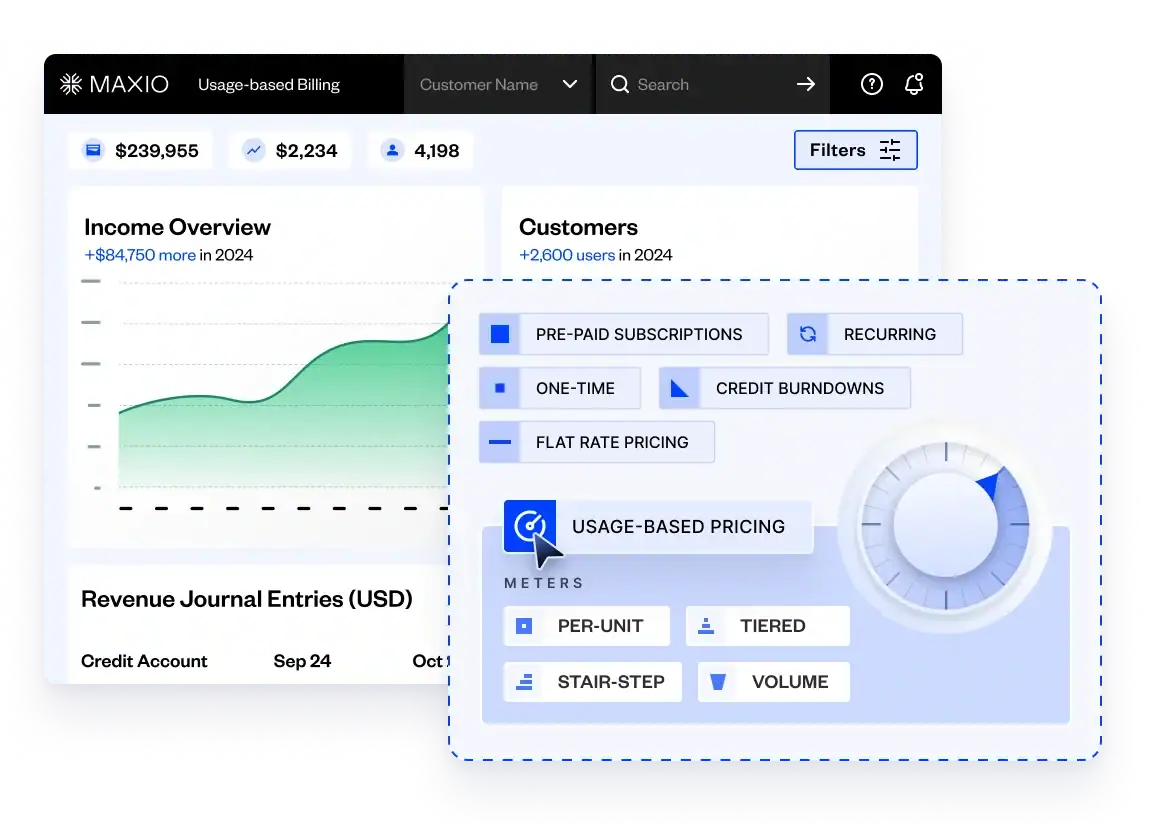SaaS companies are implementing product-led growth across market stages, revenue ranges, and industries with no end in sight—and the results are staggering. By using their product as the primary driver of growth, SaaS businesses can capture demand downmarket, serve larger user bases, and—most importantly—generate more revenue.
But how could introducing this new GTM model affect your company as a whole? We spoke with Hillary Lovric, our VP of Marketing, and Kristyn Keenzel, Product Manager, to find out the most important elements a SaaS business needs to consider when implementing a product-led growth strategy.
You can watch their full conversation here.
What is product-led growth?
Product-led growth is a go-to-market strategy that has quickly become one of the most popular growth models used today. Unlike the traditional sales-led model, where sales acts as the main driver of customer acquisition and revenue growth, you lead with your product instead. Sounds pretty straightforward, right? Product-led growth is simple in theory. However, it requires a few prerequisites to be implemented successfully.
Quick time-to-value
In a strictly sales-led company, products and services are kept locked behind a paywall and can only be experienced by booking a meeting with a sales rep and sitting through a demo. While this model makes sense for SaaS companies with a highly complex product offering or who serve a hyper-niche market, it’s not an ideal customer journey for product-led companies.
In PLG, The best way to appeal to new users is through a seamless user experience and quick time-to-value. A new user should be able to sign up, complete basic onboarding, and start using the core features of your product without any one-on-one human interaction.
Here are a few different tactics that product-led companies use to speed up their time-to-value:
Self signup
New users should be able to quickly purchase or signup for your SaaS without consulting a sales rep.
Streamlined onboarding
Self-directed, hands-off onboarding is a staple of product-led growth. New users should be able to get started with limited interaction from anyone in your organization. If your SaaS requires a lengthy implementation process or several one-on-one training calls to onboard new users, a product-led model may not be right for you.
Entry-level pricing
Flexible billing and pricing is another key feature of successful product-led SaaS companies. Offering an entry-level pricing plan lowers the barrier to entry for new customers and provides a greater incentive for prospective users to sign up, stick around, and increase their product usage over time.
Free trials
A freemium business model allows product-led SaaS companies to build up a large initial user base at no additional cost. It also solves a common problem found in sales-led models: too many paywalls early in the buyer’s journey prevent prospects from experiencing your product/service’s value first hand. A freemium offering breaks down those walls and gives users a clear path to discover your SaaS.
Self-service support
Product-led companies typically provide several channels of support, including:
- On-demand training modules
- Interactive guides
- In-depth knowledge bases
- Community groups and user forums
- Detailed product documentation for users
Notice how none of these processes involve a one-to-one interaction? Self-service onboarding allows customers to quickly grasp the fundamentals of your SaaS without pulling additional resources from your sales or customer success teams.
What role does sales play in a product-led company?
Sales reps take on a different role and set of responsibilities in a product-led company than they would in a traditionally sales-led one.
In a product-led model, the main job of the sales rep is to consult existing customers on how they can continue to get the most out of their product experience—similar to a customer success motion.
As customers’ needs increase over time, they’ll be faced with more complex product offerings and features to choose from. A knowledgeable sales rep can alleviate the pressure and guide customers through the buying process.
For example, when a user is ready to upgrade their plan, a sales rep helps them put together custom pricing and packaging. By introducing sales later in the buying process, sales reps can upsell and cross-sell to existing customers and help drive expansion revenue across the organization.
What role does the product team play in a product-led company?
Adopting a product-led model will have a significant impact on your product team (…Bet you didn’t see that one coming).
To start, you’ll have a massive influx of new users trying out your product via self-signup. A large user base is not only good for building your sales team’s pipeline, but it also gives your product team access to several key data points, such as:
- Which product features are used the most
- Which product features are used the least
- Where you can make product improvements based on user feedback
Instead of relying solely on customer feedback from individual accounts, product teams can leverage the data and insights from their existing user base to inform their product roadmap and plan product development based on user needs.
Automating the customer support process
One of the biggest downsides of having a large user base is that the number of support tickets you receive will increase drastically.
While the support process would typically be carried out through your sales, support, or customer success teams, you’ll now need a lower touch process to manage support requests efficiently.
In lieu of a support team with infinite bandwidth, you can supplement your support process with educational assets such as:
- Learning modules
- Documentation
- User guides
- Knowledge bases
- Community forums
A companywide approach to PLG
Just because “product” is in the name product-led growth does not mean that this GTM strategy falls squarely on the product team’s shoulders.
It truly takes a village to implement and pull off PLG successfully. It’s a companywide initiative that every member of your organization has to embrace and support. For example:
- Marketing will focus more on increasing product adoption and usage instead of just cranking out MQLs each month. They are responsible for building a strategic narrative around the product and nurturing product-qualified leads (PQLs)—these are users who have already experienced value from your product/service. Additionally, PLG marketers will need to put more emphasis on inbound marketing channels—SEO, brand marketing, email nurtures, content, and community—to raise awareness and help new users discover their products.
- Sales will track more than just marketing qualified leads (MQLs), but product qualified leads (PQLs) as well. PQLs are determined by different product signals—free trial deadline, number of product users in a company, etc. Sales reps prospect and perform outreach based on these intent signals. From there, the sales rep will reach out to upsell, cross-sell, and help existing accounts put together custom pricing and packaging based on their needs.
- Customer Success will continue to double down on retention and renewal metrics to make sure users who sign up for your SaaS stick around. They’ll also distribute firmographic data to inform other departments which users contribute the most to your ARR, NRR, churn, etc.
- They also have tremendous influence over upsells and account nurtures. A CSM is often the first person paid customers speak to. Because of this dynamic, Customer Success plays the important role of customer champion and helps determine whether or not target accounts convert to an enterprise deal.
- Finance will need to develop a system to account for the complex pricing within a product-led framework. Many product-led organizations use a mix of free trials, usage-based pricing, and other hybrid models to meet the pricing needs of all their users. Finance teams will also need to account for changes in their billing methods, such as switching from invoicing to automatic billing linked to a credit card. Finance teams can use advanced revenue management tools to recognize recurring revenue and track growth metrics that are specific to PLG companies.
How you think about customers
It’s imperative that you understand your audience and their buyer’s journey before you make the shift to PLG.
Think through each of your personas and how they’ll use your products.
- Who is the person signing up? Who’s the one testing the product?
- Which individual users are you targeting?
- How will your users’ product needs increase over time?
- Is your SaaS built to scale if they decide to roll out your product across their team, department, or organization?
Based on your customer needs, you can decide how to best support your users throughout their product experience.
Key Takeaways
- At any point in your company’s life cycle, SaaS businesses can benefit from adding a product-led motion to their business plan
- PLG needs to be a companywide initiative that is embraced by team members across the organization
- You must understand your key personas and their buyer journey before making the shift to PLG
Conclusion
Introducing a product-led motion is a big shift for SLG companies—a shift that affects your product, operations, customer enablement, and culture. That’s a lot of change. For established sales-led companies and brand new startups, diving right into a product-led model can seem more disruptive than productive.
Since introducing a new growth model is a cultural change as much as it is an operational one—when you choose to make this shift matters. You’ll need both internal and external buy-in as well as momentum to support it.
If you’re ready to make the shift to product-led growth, or if you just want more insights, we’ve compiled all our product-led growth and GTM knowledge in this ebook, How Product-Led Growth is Changing B2B SaaS.
Is product-led growth replacing the traditional sales-led model? Download the guide to find out.



